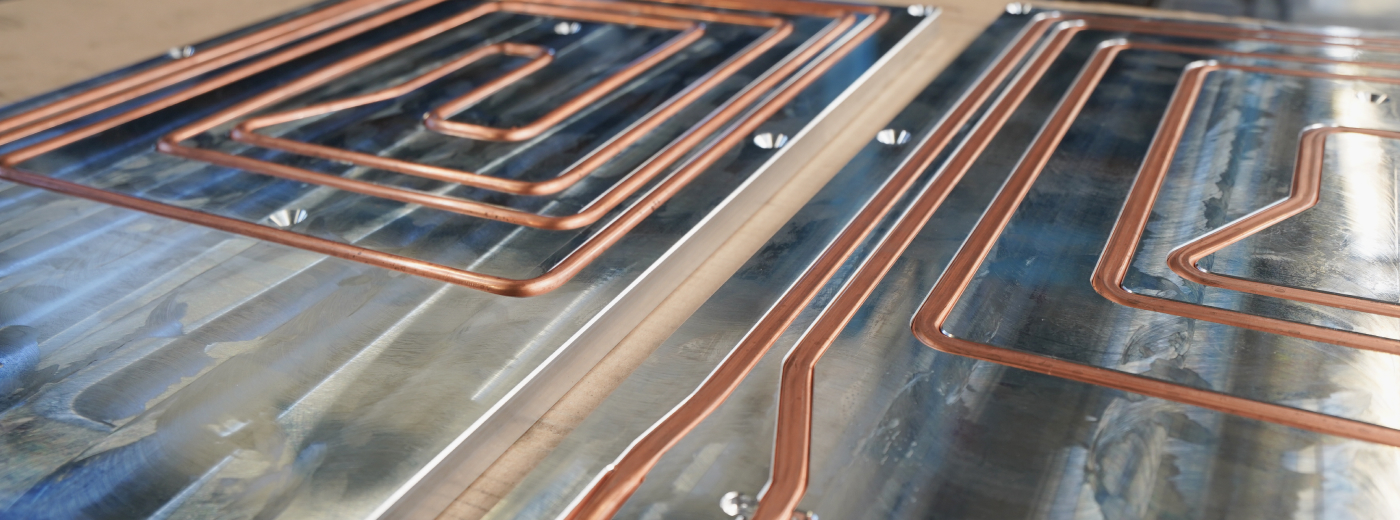
Pressing
Learn how modern pressing technologies enable highly efficient heat sinks for electronics and liquid cooling – precise, efficient, and application-optimized.

Copper is one of the most efficient materials for heat dissipation in modern cooling technology. With its exceptionally high thermal and electrical conductivity, it is ideal for high-performance heat sinks and liquid cooling plates in power electronics.
Learn more in a conversationWith its exceptional thermal conductivity, electrical efficiency, and formability, copper is the preferred material for high-performance heat sinks and liquid cooling plates. It enables precise temperature control, increases the lifetime of electronic components, and guarantees maximum reliability in power electronics.
Superior Thermal Conductivity
With a thermal conductivity of around 400 W/mK, copper dissipates heat about twice as efficiently as aluminum. This keeps electronic component temperatures stable even at high power densities – crucial for longer service life and higher efficiency.
High Electrical Conductivity
Copper combines heat and electrical conduction in one material. Thanks to its excellent electrical conductivity, it is ideal for applications requiring minimal losses and maximum current-carrying capacity – such as in inverters, power transistors, or telecommunication systems.
Mechanical Strength and Formability
Copper is strong yet easily formable. This allows thin-walled, complex heat sink structures with high robustness. It can be extruded, deep-drawn, or precision-cast and is also suitable for microchannel structures.
Ideal for High-Performance Applications
Copper is preferred where maximum heat dissipation is required in limited space – such as in power electronics, energy conversion, telecommunications, or data centers.

C10100 (approx. 391 W/mK)
C11000 (approx. 385 W/mK)
These high-purity alloys offer optimal thermal and electrical conductivity and excellent machinability. They are ideal for heat sinks and liquid cooling plates under heavy thermal load.
CuCrZr (approx. 330 W/mK)
Combination of high strength, thermal conductivity, and corrosion resistance.
Particularly suitable for mechanically demanding applications and high-current systems.
Copper provides excellent conditions for microchannel technologies:
Finely structured channels within the plate enable highly efficient heat transfer through the coolant. This technology is mainly used where compact designs and maximum cooling performance are required.
Copper enables a wide range of manufacturing methods:
Extrusion: For uniform cooling structures
Deep drawing / precision casting: For complex geometries
Brazing & milling: For modular liquid cooling systems
This allows both standard solutions and customized high-end cooling systems to be realized.

Although copper has excellent material properties, it is more susceptible to corrosion than aluminum.
Therefore, COOLTEC applies special protective coatings, nickel or tin layers, and passivation treatments.
Reasons:
Extended service life
Increased corrosion resistance
Long-term stable heat transfer
Our experts provide individual advice on choosing between aluminum, copper, or stainless steel – for heat sinks that are efficient, robust, and perfectly tailored to your needs.